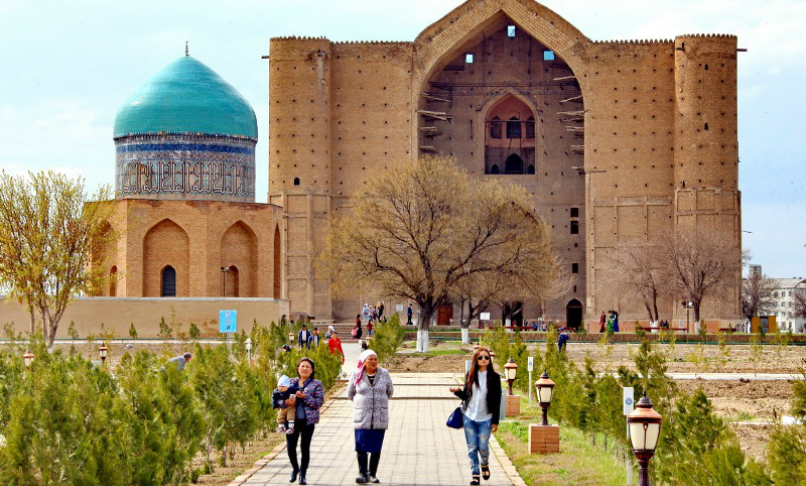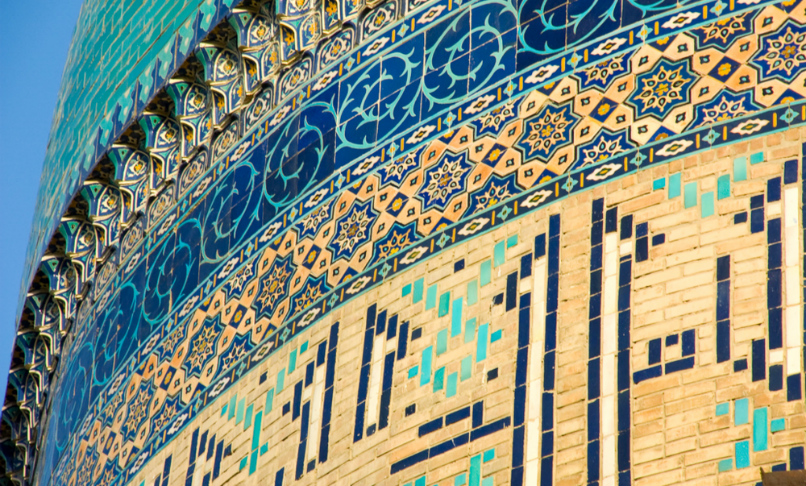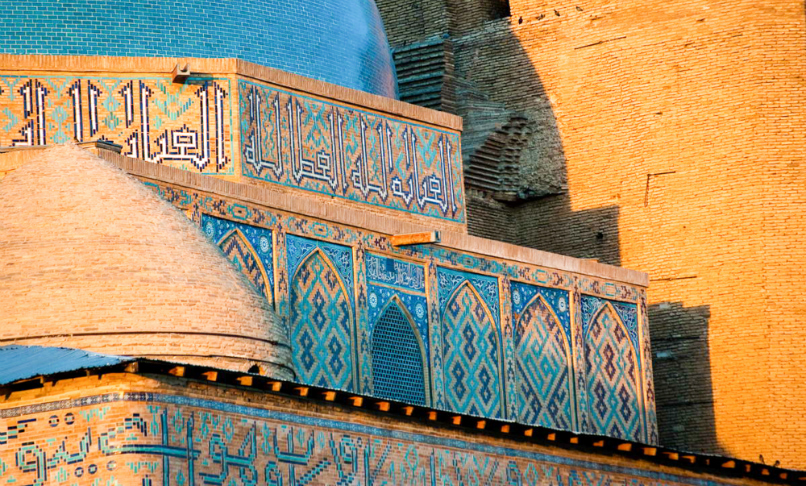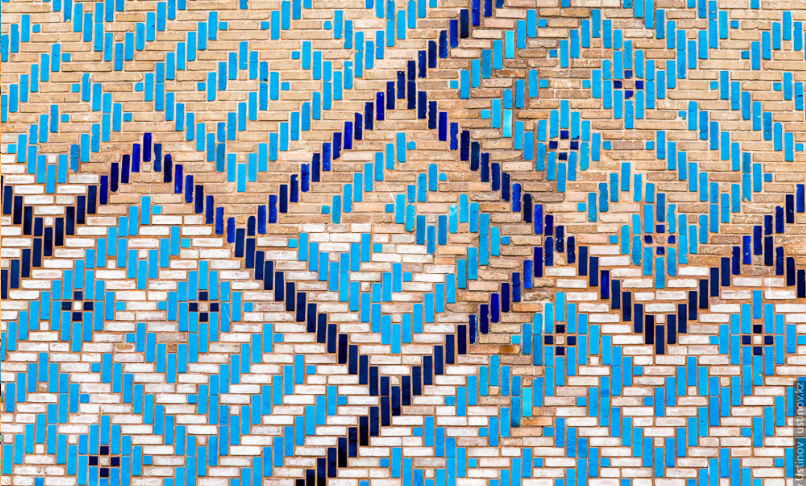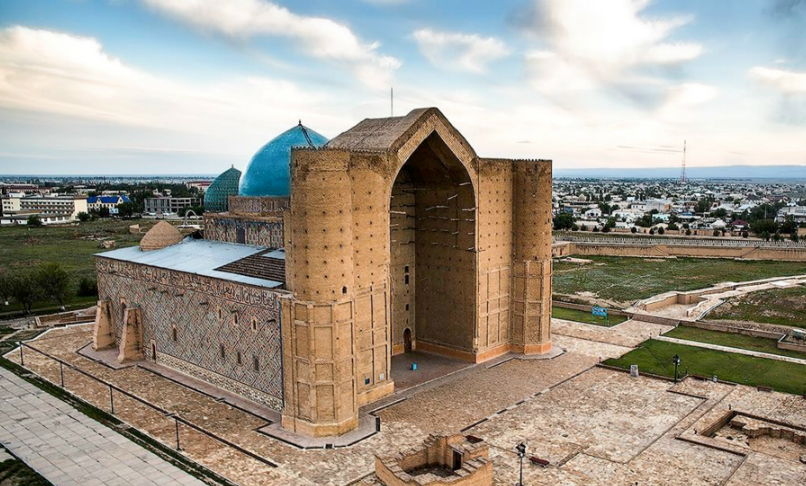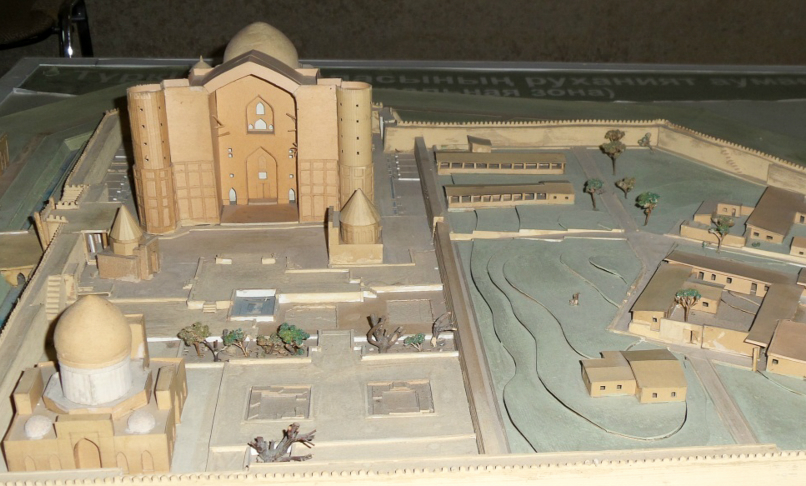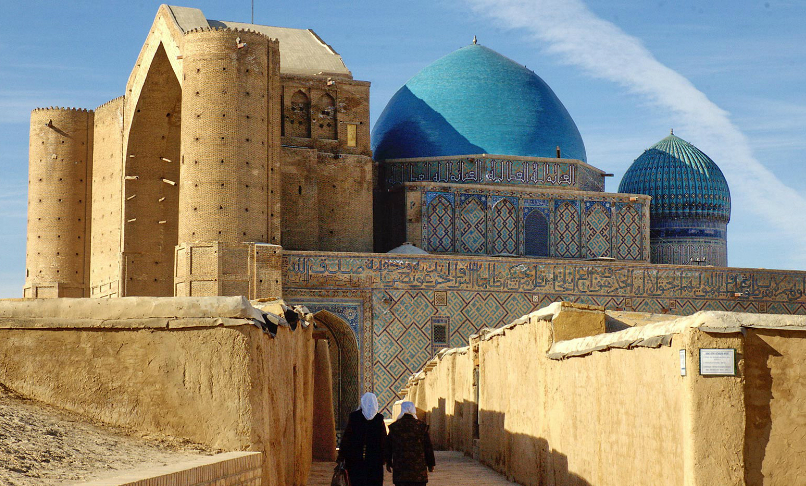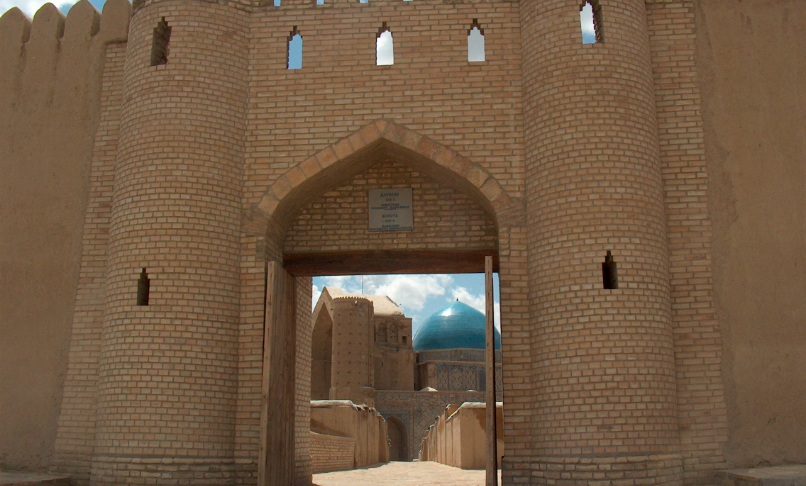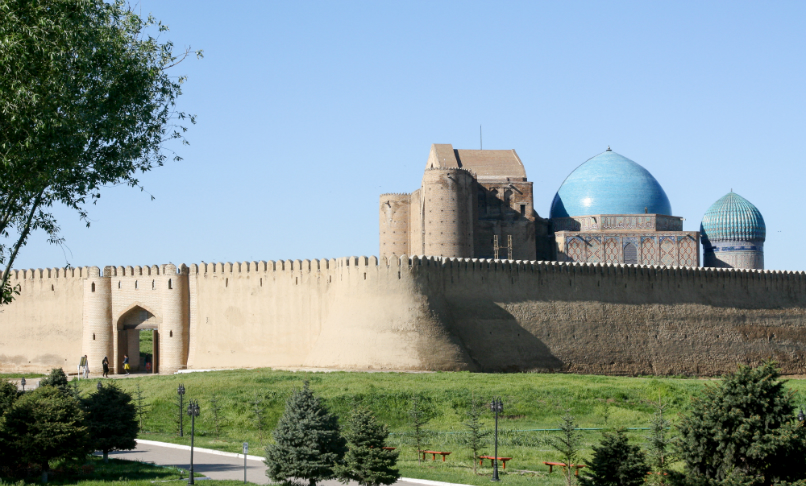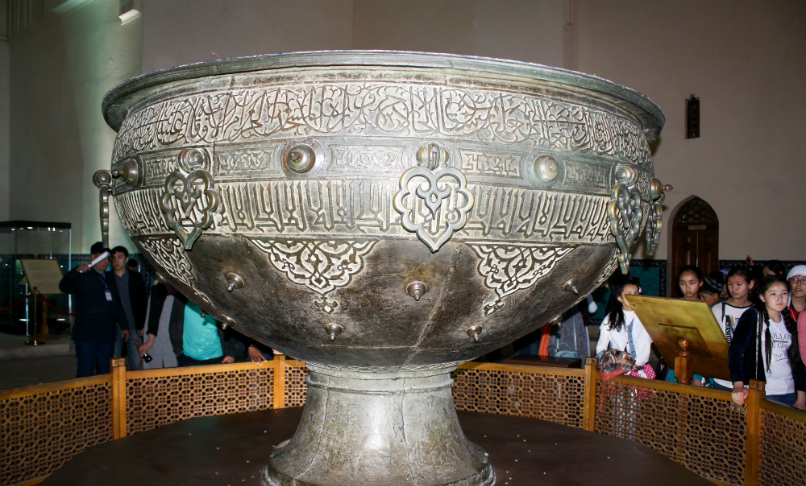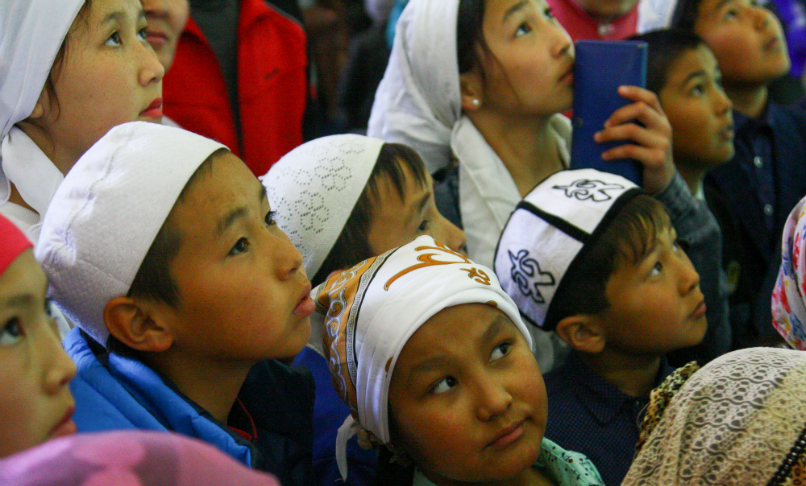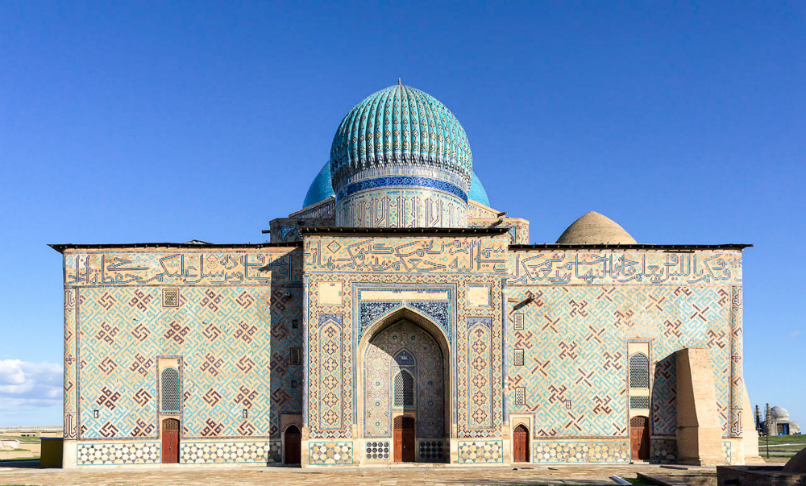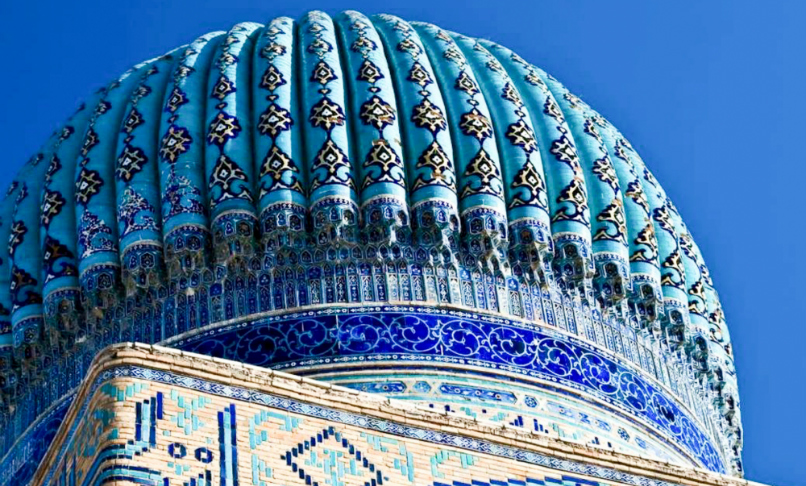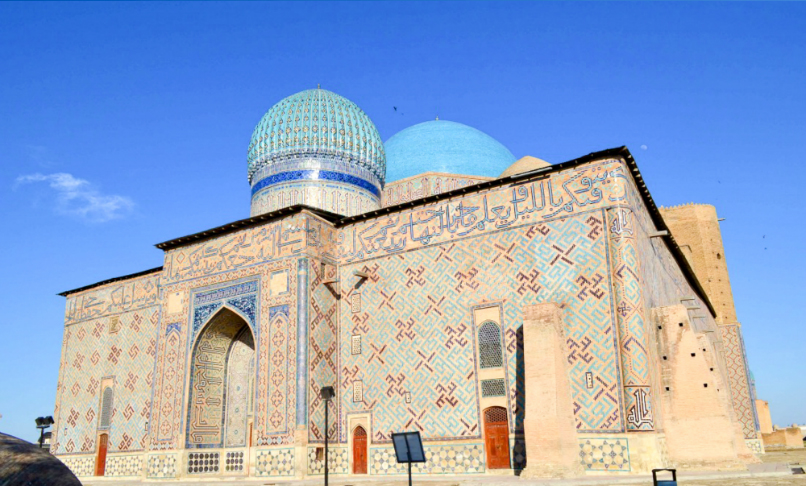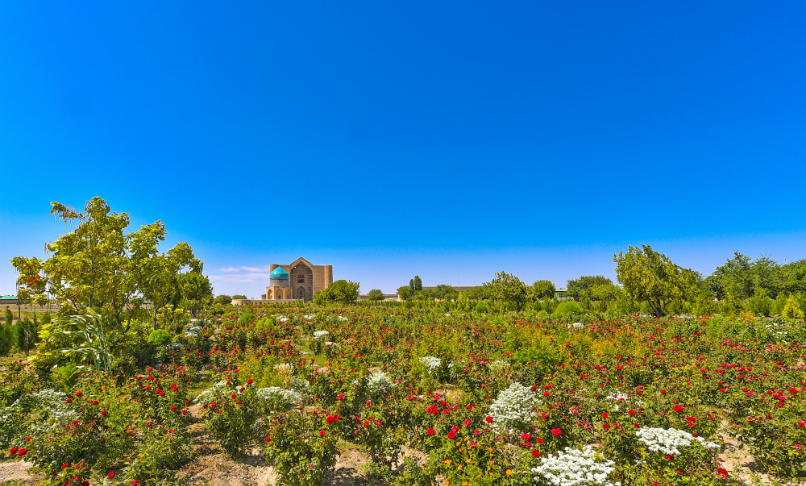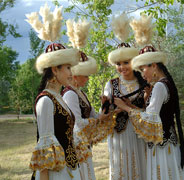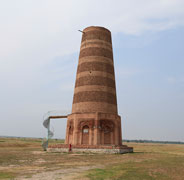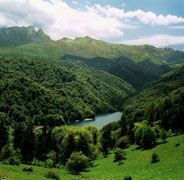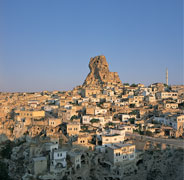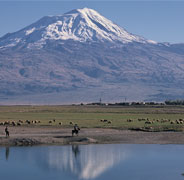Mausoleum of Khoja Ahmed Yasawi
The Mausoleum of Khoja Ahmed Yasawi, an eminent 12th century Sufi master, is situated in southern Kazakhstan, in the city of Turkistan. Built between 1389 and 1405 by Timur (Tamerlane), the Ruler of Central Asia, it replaced a smaller 12th century mausoleum. However, on the death of Timur in 1405 construction of the mausoleum was halted and it was never completed.
The unfinished mausoleum stands within a former citadel in the medieval town of Yassi, modern-day Turkistan.
The rectangular mausoleum is just under 39 meters tall and, despite being unfinished, is one of the best-preserved and most outstanding examples of Timurid architecture. Skilled Persian craftsmen were employed to work on the project and Timur himself is reported to have participated in the building work.
The mausoleum’s innovative spatial arrangements, vaults, domes and decorations served as prototypes for other major Islamic buildings of the Timurid period, in particular those in Samarkand, the city in Uzbekistan famous for its beautiful mosques and mausoleums.
Constructed of fired brick, the Mausoleum of Khoja Ahmed Yasawi has 35 rooms and contains thirty-five rooms that have a variety of functions. A conic-spherical dome, the largest in Central Asia and decorated with beautiful turquoise tiles, sits above the main hall (kazandyk), there are fragments of the original wall paintings, alabaster stalactites (muqarnas) in the intrados (the lower or inner curve of an arch), glazed tiles featuring geometric patterns and epigraphic on the exterior and interior walls, fine Kufic and Suls inscriptions on the walls and texts from the Qu’ran. The main entrance and parts of the interior were left unfinished, providing significant evidence of the construction methods of the period.
The property, burials and remains of the old town offer significant testimony to the history of Central Asia. The mausoleum is closely associated with the diffusion of Islam in this region with the help of Sufi orders, and with the political ideology of Timur.

